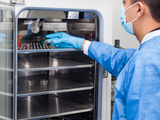Tips for a Successful Laboratory Relocation
If you are planning a laboratory relocation, you probably already understand the sheer amount of planning that goes into a move. But don’t let this overwhelm you. If you do your research and have a plan, your move is sure to go smoothly. Keep reading for a few helpful tips for a successful laboratory relocation.
Set Up Your Move for Success
Try to plan as much as you can well in advance before the moving day. This includes setting aside and packing materials, labelling equipment and materials, and knowing the route that you will take materials out of the lab for loading. You should also inspect the new laboratory space and decide what equipment will need to be installed first.
Considerations for Your Materials
Lab equipment can be difficult to transport during a move. Here are some specific categories to consider.
Fragile
Laboratories are full of fragile tools and equipment, such as test tubes, beakers, microscope slides, and more. Make sure to thoroughly wash and properly store these items before transport. Larger equipment and tools can be sensitive to bumps and move around during transport as well, which could damage calibration and the condition of the equipment. Make sure that all equipment is properly supported during transit.
Cold Storage
Your lab space may have a supply of materials that require storage at specific temperatures. In this case, a jacketed glass reactor vessel may be helpful in regulating the temperature of these materials in the lab. Although, for a large-scale move, you will need to employ the aid of a cold-storage transport vehicle or freezer. These types of temperature-sensitive materials should be the last ones out of your laboratory and the first ones to be stored in the new space due to their lack of stability.
Prevent Contamination
You may be used to using hazardous materials within the lab space, but transporting them is another challenge entirely. Be sure to keep these materials separated from the rest to avoid possible contamination of your other substances. They should only be transported in safe and secured packaging, so you won’t risk contact with them yourself or with your other materials.
There are a lot of factors to consider when moving out of your laboratory space. Hopefully, with these tips for a successful laboratory relocation, you will have all your preparations in place. With this adequate planning, you will be safely set up in your new lab space in no time.
Explore Popular Articles
How a Vac Oven Can Revolutionize Your Drying Process
In industries where precision drying is critical – such as pharmaceuticals, food processi...
Secrets to Mastering the Vacuum Purge: Process for Cleaner Extracts
Modern extraction systems pull out most solvents quickly, but those last traces demand careful...
Maintenance and Care 101: How to Prolong the Lifespan of Your Vacuum Oven
Vacuum ovens are indispensable in industries like pharmaceuticals, electronics, and cannabis process...




